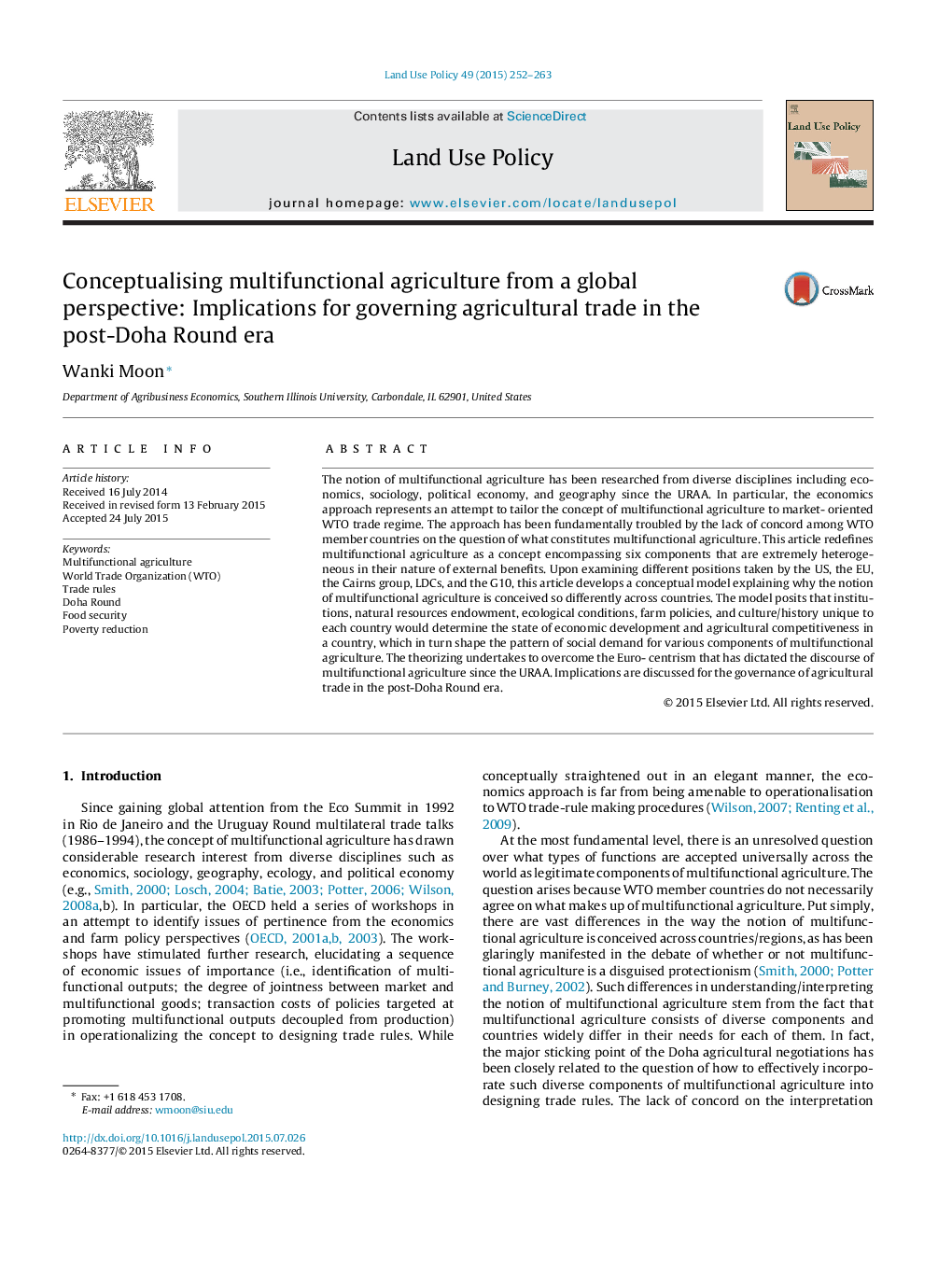| Article ID | Journal | Published Year | Pages | File Type |
|---|---|---|---|---|
| 6547761 | Land Use Policy | 2015 | 12 Pages |
Abstract
The notion of multifunctional agriculture has been researched from diverse disciplines including economics, sociology, political economy, and geography since the URAA. In particular, the economics approach represents an attempt to tailor the concept of multifunctional agriculture to market- oriented WTO trade regime. The approach has been fundamentally troubled by the lack of concord among WTO member countries on the question of what constitutes multifunctional agriculture. This article redefines multifunctional agriculture as a concept encompassing six components that are extremely heterogeneous in their nature of external benefits. Upon examining different positions taken by the US, the EU, the Cairns group, LDCs, and the G10, this article develops a conceptual model explaining why the notion of multifunctional agriculture is conceived so differently across countries. The model posits that institutions, natural resources endowment, ecological conditions, farm policies, and culture/history unique to each country would determine the state of economic development and agricultural competitiveness in a country, which in turn shape the pattern of social demand for various components of multifunctional agriculture. The theorizing undertakes to overcome the Euro- centrism that has dictated the discourse of multifunctional agriculture since the URAA. Implications are discussed for the governance of agricultural trade in the post-Doha Round era.
Keywords
Related Topics
Life Sciences
Agricultural and Biological Sciences
Forestry
Authors
Wanki Moon,
